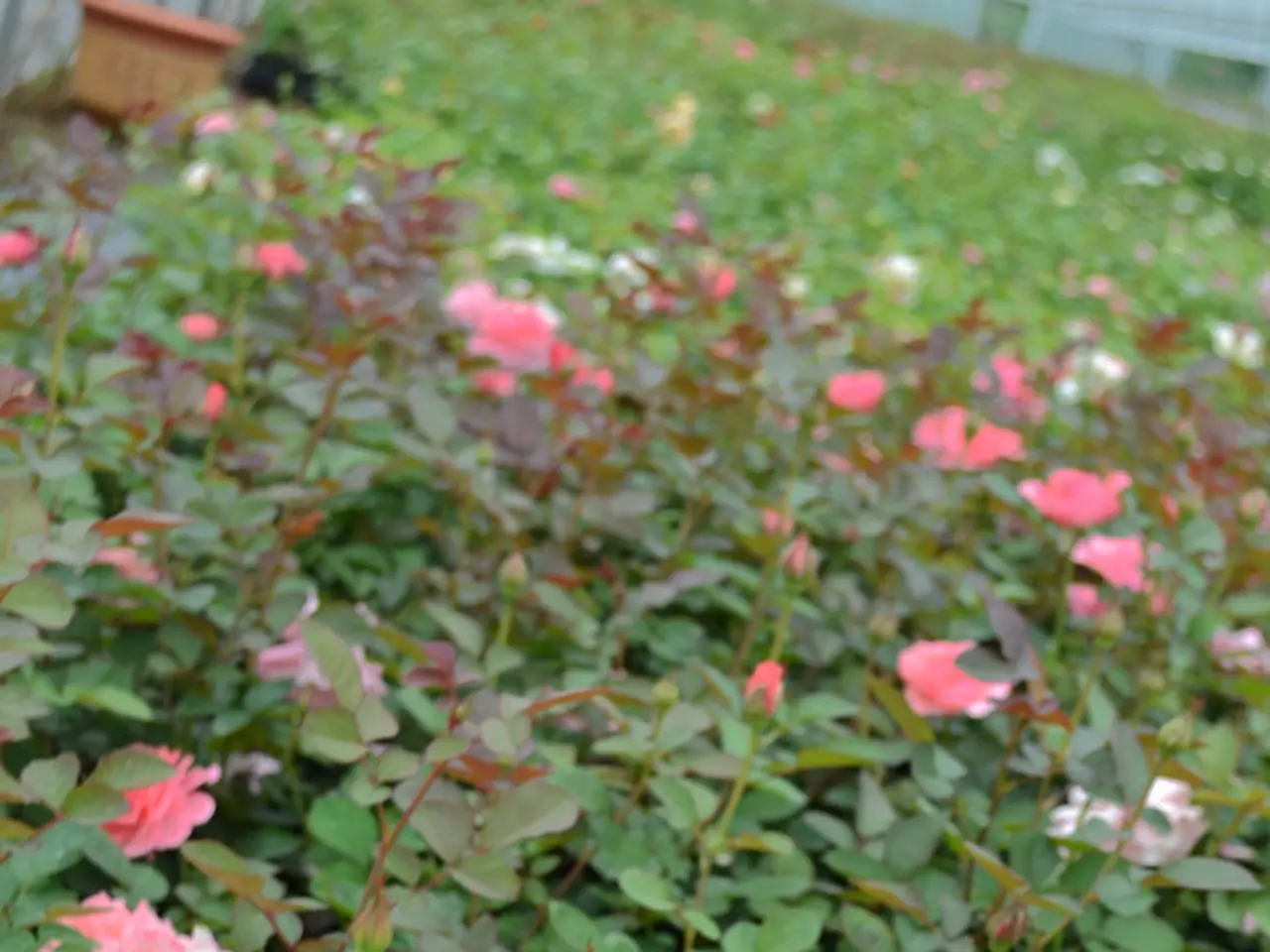Vibrant-Hued Bonsai: Plant Varieties Displaying Bright Blossoms and Fruits
For bonsai enthusiasts seeking to create miniature masterpieces that showcase the ephemeral beauty and bounty of nature, cultivating colorful species that produce vibrant blooms and succulent fruits is a rewarding pursuit. Here's a guide to some unique flowering and fruiting bonsai species, along with their specific care requirements.
Chinese Sweet Plum (Sageretia theezans)
This indoor bonsai produces small, white flowers leading to tiny purple plum-shaped fruits after approximately 10 years. Its foliage boasts a unique rusty red to glossy green coloration, and the bark shows attractive red/tan flaky textures. To care for a Chinese Sweet Plum, keep it indoors with indirect light, and water it regularly. It is considered quick-growing and beginner-friendly.
Bougainvillea
Known for its vibrant, paper-thin blooms, Bougainvillea thrives in warm, full sun, frost-free climates. Watering should be allowed to occur after the soil has dried slightly for optimal health and flowering performance. This tropical bonsai is best suited for warmer, frost-free environments.
Wisteria
Famous for cascading purple blooms, Wisteria demands heavy watering during the growing season and prefers a full sun, temperate climate. Careful root management and pruning right after flowering are essential to promote next season’s buds.
Dwarf Pomegranate
Producing both flowers and fruit, the Dwarf Pomegranate makes a striking decorative bonsai. It requires care typical of fruiting bonsai, including proper watering and sunlight exposure, usually in warmer climates.
Flowering Cherry (Prunus serrulata)
Offering spectacular spring blooms in pink or white followed by elegant branching and lovely bark texture, Flowering Cherry grows best in USDA zones 5-8 with formal or informal upright styles. Pruning right after blooming preserves next year’s flowers.
Japanese Azalea (Azalea indicium)
Known for a profusion of spring blossoms in brilliant colors, the Japanese Azalea requires careful attention to watering and light to maintain bloom health.
Specific Care Requirements Summary
| Species | Flowering/Fruiting Characteristics | Lighting | Watering | Climate/Temperature | Special Care Notes | |-----------------------|---------------------------------------------------|-----------------------|---------------------------------|-------------------------------------|---------------------------------------------| | Chinese Sweet Plum | Small white flowers; purple plum-like fruits | Indoor, indirect light | Regular; beginner-friendly | Indoor, stable temperature | Prefers indoor warmth; flaky bark adds interest | | Bougainvillea | Vivid paper-thin blooms | Full sun | Let soil dry slightly | Warm, frost-free | Tropical; avoid cold, frost | | Wisteria | Cascading purple blooms | Full sun | Heavy watering in growing season| Temperate | Root pruning essential; prune after flowering for next year’s buds | | Dwarf Pomegranate | Flowers and edible fruits | Full sun to partial | Moderate, regular | Warm climates | Fruiting bonsai; needs sunlight and good drainage | | Flowering Cherry | Spectacular pink/white spring blooms | Full sun to partial | Moderate, avoid waterlogging | USDA zones 5-8 | Prune after blooms to encourage next year’s flowers | | Japanese Azalea | Profuse spring blossoms | Partial to full sun | Keep moist but well-drained | Mild temperate | Requires good ventilation and careful watering |
By choosing these bonsai species, growers can enjoy both beautiful flowers and unique fruits that add color and character to their collection. Proper care—especially attention to watering cycles, sunlight, pruning timing, and climate suitability—is key to ensuring optimal growth and spectacular seasonal displays.
Pruning during the flowering season can enhance blooms and fruits by promoting healthy growth and encouraging the tree to focus energy on producing more flowers and fruit. Observe and record the species' natural cycles, noting the timing of blooming, fruiting, and dormancy. To optimize a Bonsai's blooming window, consider species-specific timing, environmental cues, nutrient and water management, and pruning and training.
Common pests targeting fruiting Bonsai species include aphids, whiteflies, spider mites, mealybugs, scale, and fruit flies. Regular inspection and prompt treatment are essential to maintain a healthy and thriving bonsai collection.
- In addition to bonsai that showcase the ephemeral beauty of nature, growers can also opt for species that produce both flowers and fruits, such as the Chinese Sweet Plum, Dwarf Pomegranate, Flowering Cherry, and Japanese Azalea.
- For those interested in tropical fashion-and-beauty, the Bougainvillea bonsai thrives in warm, full sun, frost-free climates, offering vibrant paper-thin blooms.
- When it comes to home-and-garden décor, food-and-drink enthusiasts might appreciate the Flowering Cherry and Dwarf Pomegranate, which produce stunning blooms and edible fruits respectively, adding a touch of color and character to any indoor setting.




